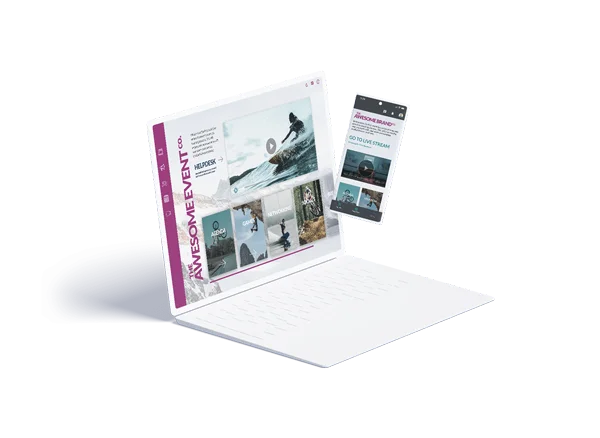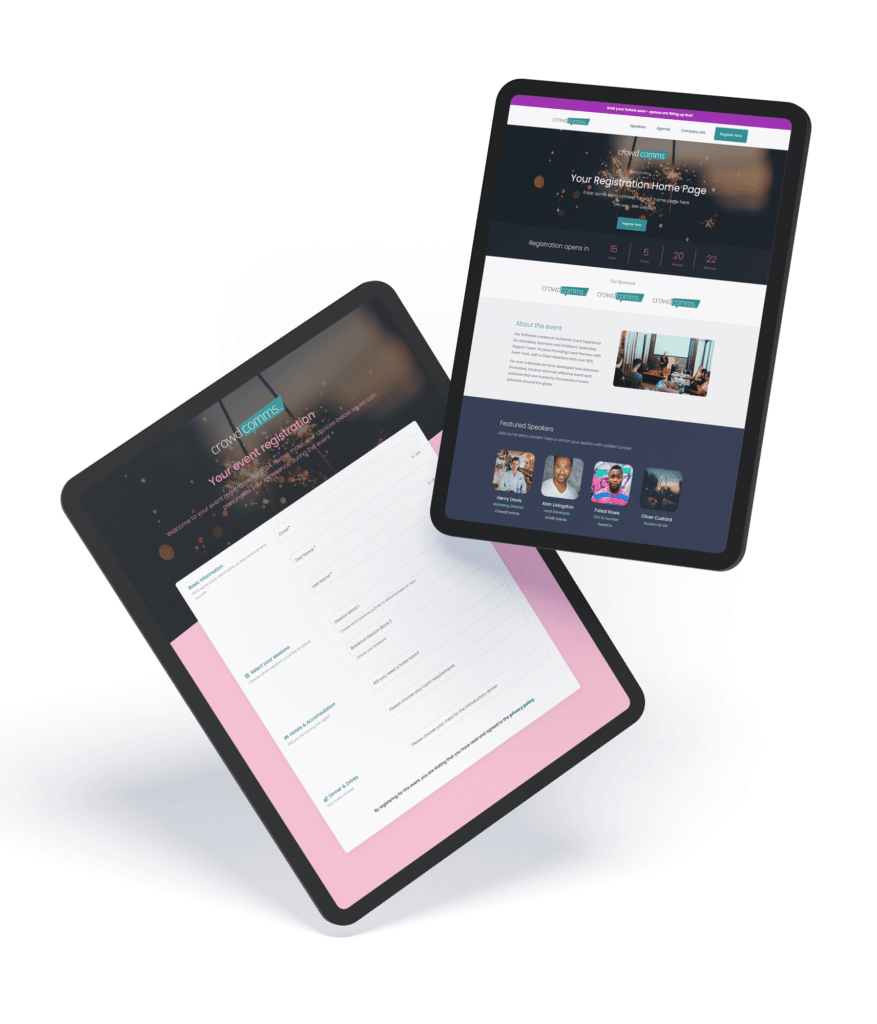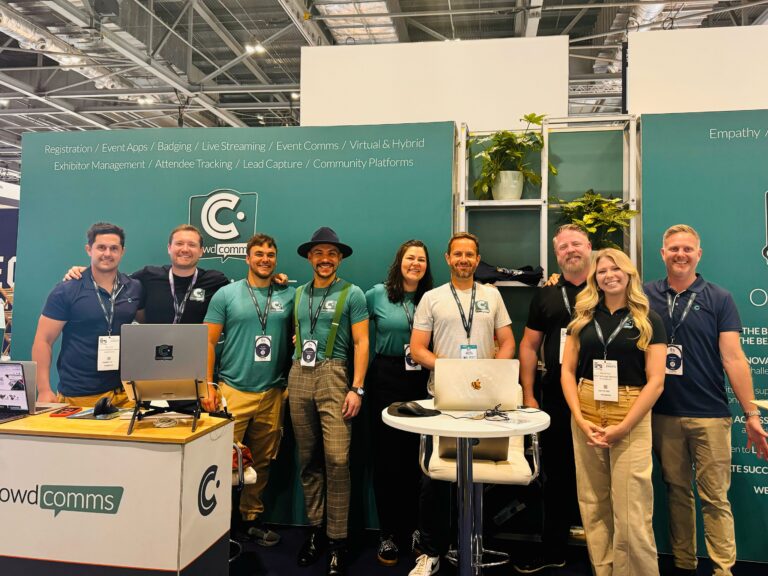
For event planners and trade show marketers, the online registration form isn’t just a checkbox but a gateway to successful attendance and engagement – it also unlocks the oil of events – quality, verified data.
In an era where user retention hinges on the simplification of processes, creating a streamlined registration form is pivotal for event success.
This blog is tailored to the meticulous event planner and the marketing professional, sharing insights on how to design registration forms that charm attendees with their ease and intuition, drive high conversion rates, and provide tangible value to your event management strategy.
Why Streamlining Registration Forms Matters
Imagine standing in the swift current of a clear, freshwater stream, the path straight and flowing, no impediments or deviations to bar your way.
This same experience is what registrants should feel when interacting with your online forms. Streamlining the registration process is crucial for several reasons:
- Easier navigation: Simplified forms make it easier for users to understand and complete essential actions.
- Reduced bounce rates: With all hurdles removed, the likelihood of users abandoning the registration process decreases.
- Increased conversion rates: Streamlined forms naturally lend themselves to higher rates of successful conversions not just for registration but for attendance too.
- Better data management: By ensuring clarity on the data you’re capturing, you set the stage for efficient event analytics that yield actionable insights.
The following sections will detail how to achieve a streamlined registration process that makes the sign-up experience for your online event as easy as a walk in the park.
Crafting User-friendly and Intuitive Forms
Focus on the essentials
The age-old adage ‘less is more’ rings particularly true when designing registration forms.
Each additional field is a potential barrier. Begin by defining the bare-bones data you need — ask yourself what information is non-negotiable for managing the attendee list and providing event-specific updates.
Common essentials include name, email, company name, role and perhaps a contact number. If certain data points are essential but not immediately necessary, consider grouping them in a separate field or asking for it later on.
A single step to success
Nobody wants to jump through hoops. Break down the process into svelte, simple questions displayed on a single page.
Use conditional logic to reveal attendee-specific questions only when relevant, thus keeping the main form compact. Logic jump allows you to control the path a user takes through your form, presenting questions that are pertinent to the registrant’s previous answers.
Intuitive autocompletions
Leverage modern form-building tools offering autocomplete for ease and speed. By integrating with modern browser standards, these tools utilise stored attendee information; ensuring your attendees can enjoy a quick and effortless form completion. Recommendations based on prior user input can expedite submission without the need for excessive typing.
Mobile-optimisation is a must
Mobile accounts for an increasing proportion of web traffic, so designing for mobile-friendliness is no longer optional. Utilise a responsive design that adjusts for different screen sizes. Much research shows increasing adoption of mobile usage (60% plus) in online purchasing, so ignoring this aspect would be a significant drawback.
CTA – Simple yet engaging
The Call-to-Action (CTA) is the ultimate form of persuasion within your form design.
Use clear, action-oriented language such as that conveys the value of completing the form, such as ‘Register Now’ or ‘Reserve My Seat’ to engage potential attendees, that conveys the value of completing the form. It should be prominent, whether that’s through colour contrast, size, or placement.
Avoid technical Jargon
Speak your attendees’ language. Technical terms confuse and lead to errors. If you have to use them, provide a brief explanation or add an “i” info bubble, where they can read more. Keeping it simple ensures everyone understands the questions and aids accessibility.
Provide help along the way
Clarity is your ally. Provide clear instructions, use tooltips judiciously, and have ‘call for assistance’ options where complex issues may arise. Avoid wall of text style instructions, rather embed help text directly within form fields where appropriate.
Test for perfection
Testing is crucial. Use A/B testing to compare different versions of the forms, soliciting feedback from your team, and conducting usability tests to make sure the final product meets your striped-back style.
Conditional formatting or branch-chain questioning
This smart approach ensures attendees only encounter relevant questions: event planners can tailor the registration experience by displaying or hiding questions and/or sections based on prior responses. In turn streamlining the registration journey, minimising user fatigue and enhancing data accuracy.
Question group privacy
By incorporating question group privacy in your event registration form, it helps refine data collection and enhances the attendee experience by allowing event planners to pre-identify segments of your audience and customise their registration path accordingly.
Data integration
Optimise your event’s efficiency and personalisation by choosing an event app that offers direct data mapping from the registration form into user groups, agenda sessions and interest tags. This eliminates the need for manual data entry or additional platform integrations, ensuring attendees have a customised experience tailored to their interests and schedule.
Enhanced accessibility
The accessibility of your event registration can be significantly enhanced by offering forms that adapt to the preferences and needs of your audience. This can be achieved by providing flexibility for attendees to choose how they wish to complete the form: whether they prefer navigating all questions on a single scrolling page, tackling the form in manageable sections, or focusing on one question at a time to minimise distractions.

Keeping Registration Forms Concise
In case we haven’t made that clear yet… simplicity is a vital component of form design.
Measure twice, cut once
Each question in your registration form should pass what we like to call the “Two Times Rule.” Before including a question, ask if you’ll use the data at least twice. If the answer is no, it’s probably not an essential field.
The power of optional registration fields
Offering optional fields allows those with more time (or relevant info) to provide additional data without overwhelming those who are short on either, keeping your form accessible to all.
Stay up-to-date
Regularly review your forms and the data points you’re capturing.
Business objectives change, and so do the reporting requirements as do the requirements of your event attendees. Ensure that every field you include today continues to serve a purpose tomorrow.

Ten Tips to Keep Event Registration Easy
- Encourage social registration: allowing users to sign up through their social media profiles significantly speeds up the process. With data autofilled from platforms like LinkedIn, particularly useful in B2B events and conferences, attending becomes as simple as a click.
- Use a recognisable URL: a vanity URL (short, custom URLs that reflect your brand or campaign) can act as a trust signal. It instantly communicates that the registration is managed by professionals.
- Visual enhancements: utilise visual cues such as progress bars or steps indicators to convey anticipated completion time and ease anxiety about form length. A time ticker, progress bar, or step indicator acts as a psychological motivator to keep attendees moving through the form.
- Confirmation is key: immediate, on-screen confirmation combined with a follow-up email is reassuring and sets expectations for next steps. Let people know they have completed your event registration form.
- Offer flexibility: the ability to edit submitted responses, update details, or cancel easily can circumvent frustration and reduce time wasted for your operations team. Integrating these features makes the process both flexible and forgiving.
- Clear privacy policy: transparency regarding how you protect and use registrant data builds trust. Link to your privacy policy directly on the form, and keep it simple.
- Engaging ‘About The Event’ content: incorporate brief, engaging content about the event within the registration page to maintain visitor interest and motivation to sign up. Ensure they know what they’re signing up for.
- Seamless payment integration: for paid events, ensure a quick and secure payment process that integrates important details without requiring repopulation from the attendee. There’s nothing more frustrating than pointlessly entering your address details twice!
- Pre-filled forms: for returning attendees, use cookies and data stored in their profiles to pre-fill known details, streamlining the process even further or use previous events data to invite attendees to register for your following event – paying close attention to data use policies and guidelines.
- Have a Plan B for technical glitches: in the digital world, glitches happen. Always have a backup plan, such as a manual registration system, to step in if the online process fails. Just in case.
- Encourage social registration: allowing users to sign up through their social media profiles significantly speeds up the process. With data autofilled from platforms like LinkedIn, particularly useful in B2B events and conferences, attending becomes as simple as a click.
Global Event Registration Software
Ready to revolutionise your event registration process? Contact the team at CrowdComms https://www.crowdcomms.com/ today.
Our team of event experts are on hand to help you create a seamless, engaging registration experience that your attendees will love. Don’t miss out on the chance to elevate your event. Get in touch now to learn more! https://www.crowdcomms.com/event-technology/registration/





